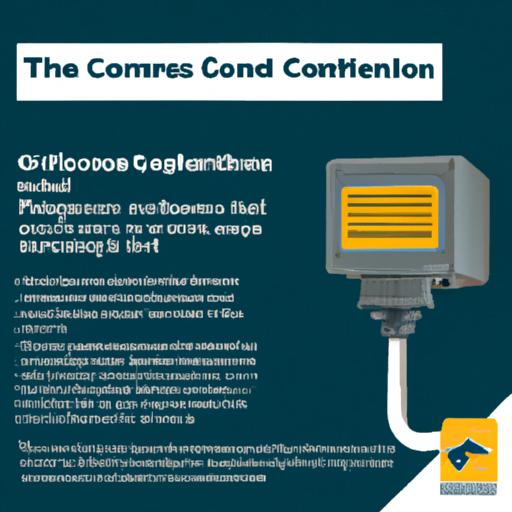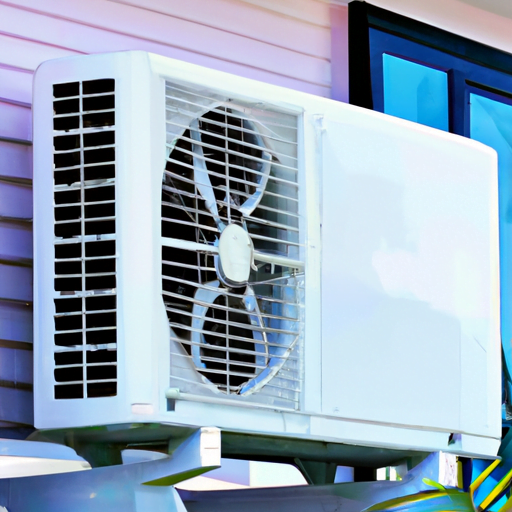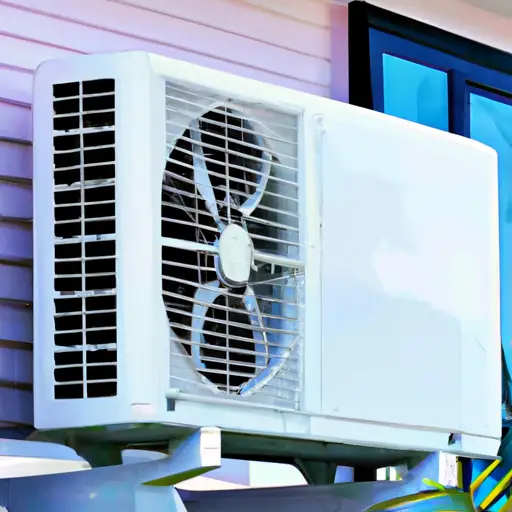So, you’re interested in off-grid living? That’s awesome! Living off the grid means being self-sufficient and relying on renewable energy sources instead of the traditional grid power. It’s a great way to reduce your carbon footprint and live a more sustainable lifestyle. But here’s a question for you: Can you run an air conditioner off-grid? The short answer is yes, you can! And in this article, we’ll dive into the details and show you exactly how to do it.
Running an air conditioner off-grid is not as challenging as you might think. It’s all about using the right equipment and optimizing your energy usage. One of the key components you’ll need is a high-quality solar power system. Solar panels will collect sunlight and convert it into electricity, which can then be used to power your AC unit. You’ll also need a battery bank to store the excess energy for use during cloudy days or at night.
However, it’s important to note that running an AC unit off-grid will require careful planning and energy management. Air conditioners are power-hungry appliances, and they can quickly drain your energy reserves if not used efficiently. That means you’ll need to consider factors like insulation, proper sizing of the AC unit, and limiting its usage during peak energy demand periods. But don’t worry, we’ll cover all these aspects and more in detail in the upcoming article.
In our comprehensive guide, we’ll walk you through the step-by-step process of running an air conditioner off-grid. We’ll discuss the different types of AC units that are suitable for off-grid living, explain how to size your solar power system, and provide tips on maximizing energy efficiency. By the end of the article, you’ll have all the knowledge and tools necessary to keep your space cool and comfortable while living off the grid. So, stay tuned for more valuable insights and let’s make off-grid AC a reality!

Introduction
Off-grid living, also known as living off the grid, is a lifestyle that involves being completely self-sufficient and disconnected from public utilities such as electricity or water supply. This way of living has gained popularity in recent years as people strive for independence, sustainability, and a smaller carbon footprint. However, one common question that arises when considering off-grid living is whether it is possible to run an air conditioning (AC) system without being connected to the grid. In this article, we will explore the possibilities and options for running an AC off-grid.
Understanding Off-Grid Living
What is off-grid living?
Off-grid living refers to the practice of living in a self-sufficient manner without relying on public utilities. This lifestyle typically involves generating your own power, creating your own water supply, and managing waste disposal independently. Off-grid homes or communities often utilize renewable energy sources, such as solar power, wind power, or hydro power, to meet their energy needs.
Advantages and challenges of off-grid living
Living off-grid offers several advantages. Firstly, it allows individuals or communities to reduce their reliance on traditional energy sources, which can help lower utility bills and decrease their environmental impact. Additionally, off-grid living encourages self-sufficiency, independence, and a deeper connection to nature.
However, off-grid living also presents challenges. Generating enough energy to power daily appliances, including an AC, can be a complex task that requires careful planning and investment. Off-grid living also requires a significant lifestyle adjustment, as it entails more responsibility and maintenance compared to living in a grid-connected home.
Energy Sources for Off-Grid Living
To run an AC off-grid, it is essential to have a reliable and sustainable energy source. Here are three common options:
Solar power
Solar power is one of the most popular energy sources for off-grid living. Solar panels convert sunlight into electricity, which can be used to power various appliances, including an AC. To utilize solar power effectively, a sufficient number of solar panels must be installed, along with an adequate battery storage system to store excess energy for use during low sunlight periods or at night.
Wind power
Wind power is another renewable energy source that can be harnessed for off-grid living. Wind turbines generate electricity from the kinetic energy of the wind. Just like solar power, wind power requires an adequate number of wind turbines and a battery storage system to ensure a continuous power supply.
Hydro power
Hydro power utilizes the energy of flowing water to generate electricity. This option is suitable for off-grid locations near rivers or streams. It involves diverting the water flow through a turbine to create power. While hydro power can be an efficient energy source, its implementation requires careful consideration of the available water source and its impact on the surrounding ecosystem.

Power Consumption Calculation for AC
Before considering the options for running an AC off-grid, it is important to determine the AC’s power consumption and calculate the total power needs of your off-grid system.
Determining AC power consumption
The power consumption of an AC unit is typically measured in watts or kilowatts (kW). This information can be found on the AC unit’s specifications or manufacturer’s website. Take note of the AC’s cooling capacity and energy efficiency rating (EER) to accurately estimate its power consumption.
Calculating total power needs
To calculate the total power needs of your off-grid system, you must consider not only the power consumption of your AC but also the energy requirements of other appliances and devices in your home. Make a list of all the appliances you intend to power and their corresponding power consumption. Summing up the power consumption of all appliances will give you an estimate of the total power needs.
Options for Running AC Off-Grid
Once you have determined your power needs, you can explore different options for running your AC off-grid. Here are three common methods:
Using a portable generator
A portable generator can provide a temporary solution for running an AC off-grid. However, it is important to choose a generator with sufficient power output to handle the AC’s power consumption. Generators powered by gasoline, propane, or diesel fuel are readily available in the market. Keep in mind that using a generator may require regular refueling and can emit exhaust fumes, so proper ventilation is crucial.
Installing solar panels
Using solar power to run an AC off-grid is a more sustainable and long-term solution. By installing an adequate number of solar panels and connecting them to a battery storage system, you can harness the sun’s energy and store it for use when needed. It is essential to calculate the solar panel capacity, battery bank capacity, and inverter requirements to ensure sufficient energy generation and storage.
Utilizing wind turbines
If your off-grid location experiences consistent wind patterns, utilizing wind power through wind turbines can be an effective option. By installing the appropriate number of wind turbines and connecting them to a battery storage system, you can generate electricity to power your AC. As with solar power, thorough calculations of wind turbine capacity, battery bank capacity, and inverter requirements are essential for successful implementation.
Calculating Solar Power Requirements
To accurately calculate the solar power requirements for running your AC off-grid, you need to consider several factors.
Determining solar panel capacity
Solar panel capacity refers to the amount of energy that a solar panel can produce. It is measured in watts or kilowatts. By dividing the AC’s power consumption by the average amount of sunlight hours in your location, you can determine the number of solar panels required to power the AC.
Battery bank capacity
A battery bank is used to store excess energy generated by the solar panels for use when there is no sunlight or during high-demand periods. To determine the battery bank capacity, you need to consider the number of hours you want to power the AC without sunlight and the battery bank’s discharge rate.
Inverter requirements
An inverter is responsible for converting the direct current (DC) electricity produced by the solar panels into alternating current (AC) electricity that can be used by your appliances. The inverter capacity should match the power consumption of your AC and other appliances.
Calculating Wind Power Requirements
Similar to solar power, calculating the wind power requirements for running an AC off-grid involves considering various factors.
Determining wind turbine capacity
Wind turbine capacity refers to the energy output of a wind turbine. By dividing the AC’s power consumption by the average wind speed in your location, you can determine the number of wind turbines required to power the AC.
Battery bank capacity
Just like with solar power, a battery bank is crucial for storing excess energy generated by the wind turbines. Calculate the battery bank capacity by considering the number of hours you want to power the AC without wind.
Inverter requirements
The inverter capacity for a wind power system should match the power consumption of the AC and other appliances, the same as with a solar power system.
Balancing Energy Generation and Consumption
To ensure a continuous power supply for your off-grid AC, it is essential to understand the concept of energy storage and optimize energy usage.
Understanding energy storage
Energy storage refers to the ability to store excess energy generated during peak production periods for use when energy demand exceeds production. Battery banks, as mentioned earlier, play a crucial role in energy storage for off-grid systems. By properly sizing and maintaining your battery bank, you can optimize your energy storage capacity and avoid power shortages.
Optimizing energy usage
To maximize the efficiency of your off-grid AC system, it is important to optimize your energy usage. This can be achieved by using energy-efficient appliances, such as AC units with high energy efficiency ratings, and implementing energy-saving practices throughout your home, such as insulating walls and windows or utilizing natural ventilation.
Maintenance and Upkeep
Maintaining an off-grid AC system involves regular tasks and troubleshooting common issues.
Regular maintenance tasks
Regular maintenance tasks for an off-grid AC system include cleaning or replacing air filters, inspecting and cleaning solar panels or wind turbines, checking battery bank connections and charge levels, and conducting routine system checks to ensure optimal performance.
Troubleshooting common issues
Despite careful planning and maintenance, issues can still arise. Common issues with off-grid AC systems include power fluctuations, battery failure, or faulty electrical connections. It is important to familiarize yourself with the troubleshooting steps specific to your system and consult with professionals if needed.
Conclusion
Running an AC off-grid is indeed possible, but it requires careful planning, investment, and understanding of the energy requirements and available energy sources. Whether you choose solar power, wind power, or a combination of both, the key to success lies in accurately calculating your power needs, sizing your energy generation system accordingly, and optimizing energy usage. While off-grid living offers independence and sustainability, it also requires dedication to maintenance and adaptability to potential challenges. With the right knowledge and approach, you can enjoy the comfort of an AC system while living off-grid.




